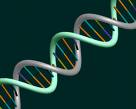
London: A new advance in harvesting stem cells from adults which has the potential to cure many of the diseases of ageing, has been hailed as the scientific discovery of the year.
The advance, which involves turning back the clock on adult tissue and “reprogramming” it with the properties of stem cells, could lead to new treatments for diseases including Parkinson’s and diabetes.
The process allows for a potentially limitless numbers of “induced pluripotent stem” (IPS) cells to be made to order from a sick patient’s cells, meaning they do not risk rejection from the immune system when transplanted.
The technique does not require stem calls to be harvested from embryos, making it more acceptable to religious groups.
Dr Robert Coontz of the journal Science, which placed cellular reprogramming top of its list of the biggest scientific breakthroughs of 2008, said it “opened a new field of biology almost overnight and holds out hope of life-saving medical advances”.
Three teams working in Japan and the United States made major advances with the technique over the last 12 months.
“When Science’s writers and editors set out to pick this year’s biggest advances, we looked for research that answers major questions about how the universe works and that paves the way for future discoveries,” Dr Coontz said.
Runner-up was the first direct observation of planets in distant star systems, which required complex measures to blot out the light from their parent stars.
Other advances on the list included improved technology to map the genome the human genetic code and new calculations of the weight of the world.
Science’s Top 10 breakthroughs of 2008
1) Cellular reprogramming
2) Observation of planets around stars
3) Insights into “good” fat
4) Expanding the catalogue of cancer genes
5) Most detailed video of a developing embryo
6) Faster, cheaper genome sequencing
7) Watching proteins at work
8) Industrial-scale energy storage
9) High-temperature superconductors
10) Calculating the weight of the world
